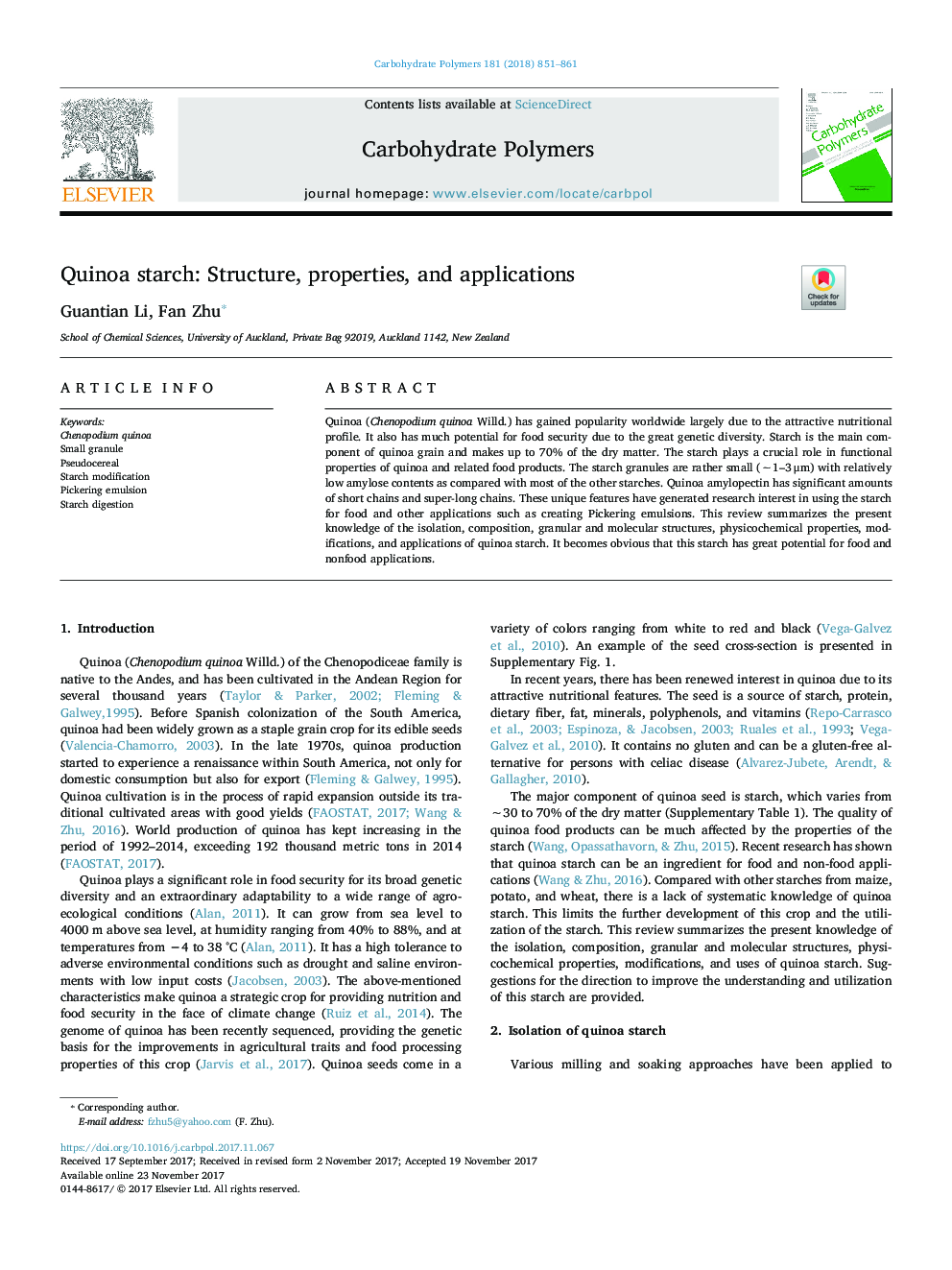| Article ID | Journal | Published Year | Pages | File Type |
|---|---|---|---|---|
| 7784854 | Carbohydrate Polymers | 2018 | 11 Pages |
Abstract
Quinoa (Chenopodium quinoa Willd.) has gained popularity worldwide largely due to the attractive nutritional profile. It also has much potential for food security due to the great genetic diversity. Starch is the main component of quinoa grain and makes up to 70% of the dry matter. The starch plays a crucial role in functional properties of quinoa and related food products. The starch granules are rather small (â¼1-3 μm) with relatively low amylose contents as compared with most of the other starches. Quinoa amylopectin has significant amounts of short chains and super-long chains. These unique features have generated research interest in using the starch for food and other applications such as creating Pickering emulsions. This review summarizes the present knowledge of the isolation, composition, granular and molecular structures, physicochemical properties, modifications, and applications of quinoa starch. It becomes obvious that this starch has great potential for food and nonfood applications.
Related Topics
Physical Sciences and Engineering
Chemistry
Organic Chemistry
Authors
Guantian Li, Fan Zhu,
